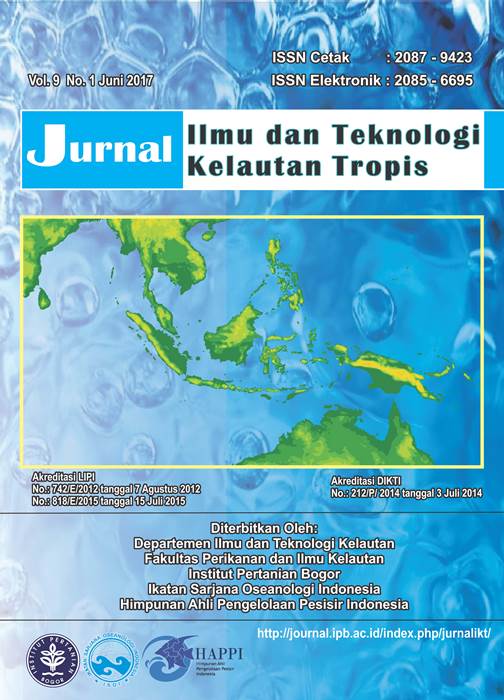DENSITY AND THE COVERAGE OF SEAGRASS ECOSYSTEM IN BAHOI VILLAGE COASTAL WATERS, NOTRH SULAWESI
Abstract
Physical seagrass ecosystem damage have been reported in various regions in Indonesia. Seagrass ecosystem damage is caused by human activity such as trampling seagrass and boats that muddy the waters and reduced the density and seagrass cover. This study aims to provide information about the density and the coverage of seagrass. The method used in this research is the transect method measuring 50x50 cm squared at three different locations by considering coastal ecosystems Bahoi village that already exist. Station 1 is near to mangrove habitat, station 2 is right on seagrass habitats, and station 3 is near to coral reef habitat. The results indicated there is six seagrass species that found in the Bahoi village which is Enhalus acoroides, Thalassia hemprichii, Cymodocea rotundata, Syringodium isoetifolium, Halophila ovalis, and Halodule uninervis. The density and seagrass cover is shows that the station 1 has the highest density and seagrass cover percentage compared with the other stations. The highest density of seagrass species located in station 1 with 955 individuals/m2, and the lowest was located at station 3 with 699 individuals/m2. While the highest cover percentage is located at station 1 with 270% and the lowest located at station 3 with 229%.
Keyword: seagrass ecosystem, density, coverage, Bahoi
Authors
This work is licensed under a Creative Commons Attribution 4.0 International License.
Jurnal Ilmu dan Teknologi Kelautan Tropis i is an open-access journal, meaning that all content is freely available without charge to the user or their institution. Users are allowed to read, download, copy, distribute, print, search, or link to the full texts of the articles in this journal without needing to request prior permission from the publisher or the author.
All articles published by Jurnal Ilmu dan Teknologi Kelautan Tropis are licensed under the Creative Commons Attribution 4.0 International License. This allows for unrestricted use, distribution, and reproduction in any medium, provided proper credit is given to the original authors.
Authors submitting manuscripts should understand and agree that the copyright of published manuscripts is retained by the authors. Copyright encompasses the exclusive rights of authors to reproduce, distribute, and sell any part of the journal articles in all forms and media. Reproduction of any part of this journal, its storage in databases, and its transmission by any form or media is allowed without written permission from Jurnal Ilmu dan Teknologi Kelautan Tropis.


